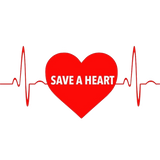Heart Attack vs. Cardiac Arrest

There are significant differences between a heart attack and cardiac arrest. The first aid treatments for each emergency differ.
A heart attack occurs when a blocked artery prevents oxygen-rich blood from reaching a section of the heart. If the blocked artery is not reopened quickly, the part of the heart normally nourished by that artery begins to die. The longer a person goes without treatment, the greater the damage.
Cardiac arrest occurs suddenly and often without warning. It is triggered by an electrical malfunction in the heart that causes an irregular heartbeat (arrhythmia). With its pumping action disrupted, the heart cannot pump blood to the brain, lungs and other organs. Seconds later, a person loses consciousness and has no pulse. When the heart stops beating, blood is not circulating. Brain death can begin in as little as three minutes.
Heart Attack:
Doctors recommend that if an individual experiences signs of a heart attack, to immediately call 911, then chew and swallow 325 mg tablets of Aspirin. The Aspirin slows clotting and decreases the size of the forming blood clot, thereby preventing the heart attack from becoming more severe.
Cardiac Arrest:
Cardiac arrest is reversible in most victims if it's treated within a few minutes. First, call 911 for emergency medical services. Then get an automated external defibrillator if one is available and use it as soon as it arrives. Begin CPR immediately and continue until professional emergency medical services arrive. If two people are available to help, one should begin CPR immediately while the other calls 911 and finds an AED.
Symptoms of Cardiac Arrest: Sudden Collapse, unresponsive to touch and sound, and not breathing or is making gasping sounds.
Knowing the difference could save a life.


